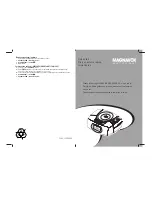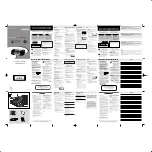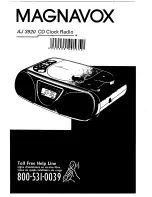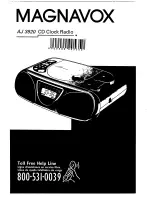
MM-010019-001, Rev. B
9
•
Always use M/A-COM authorized accessories (antennas, control heads, speakers/mics, etc.). Use of
unauthorized accessories can cause the FCC RF exposure compliance requirements to be exceeded.
The information listed above provides the user with information needed to make him or her aware of a RF
exposure, and what to do to assure that this radio operates within the FCC exposure limits of this radio.
1.5 COMMON
HAZARDS
The operator of any mobile radio should be aware of certain hazards common to
the operation of vehicular radio transmissions. Possible hazards include but are
not limited to:
•
Explosive Atmospheres
— Just as it is dangerous to fuel a vehicle while its motor running, be sure
to turn the radio
OFF
while fueling the vehicle. If the radio is mounted in the trunk of the vehicle,
DO NOT
carry containers of fuel in the trunk.
Areas with potentially explosive atmosphere are often, but not always, clearly marked. Turn the radio
OFF
when in any area with a potentially explosive atmosphere. It is rare, but not impossible that the
radio or its accessories could generate sparks.
•
Interference To Vehicular Electronic Systems
— Electronic fuel injection systems, electronic anti-
skid braking systems, electronic cruise control systems, etc., are typical of the types of electronic
devices that can malfunction due to the lack of protection from radio frequency (RF) energy present
when transmitting. If the vehicle contains such equipment, consult the dealer for the make of vehicle
and enlist his aid in determining if such electronic circuits perform normally when the radio is
transmitting.
•
Electric Blasting Caps
— To prevent accidental detonation of electric blasting caps,
DO NOT
use
two-way radios within 1000 feet (305 meters) of blasting operations. Always obey the “
Turn Off
Two-Way Radios
” (or equivalent) signs posted where electric blasting caps are being used. (OSHA
Standard: 1926.900).
•
Radio Frequency Energy
— To prevent burns or related physical injury from radio frequency
energy, do not operate the transmitter when anyone outside of the vehicle is within the minimum safe
distance from the antenna as specified in Table 1-1. Refer to Section 1.2 for additional information.
•
Vehicles Powered By Liquefied Petroleum (LP) Gas
— Radio installation in vehicles powered by
liquefied petroleum gas, where the LP gas container is located in the trunk or other sealed-off space
within the interior of the vehicle, must conform to the
N
ational
F
ire
P
rotection
A
ssociation standard
NFPA 58
. This requires:
¾
The space containing the radio equipment must be isolated by a seal from the space containing
the LP gas container and its fittings.
¾
Outside filling connections must be used for the LP gas container.
¾
The LP gas container space shall be vented to the outside of the vehicle.
•
Vehicles Equipped with Airbags
— For driver and passenger safety, avoid mounting the radio’s
control head (or any other component) above or near airbag deployment areas. In addition to driver-
side and passenger-side front-impact airbags, some vehicles may also be equipped with side-impact
airbags. For occupant safety, verify the location of all airbags within the vehicle before installing the
radio equipment.










































